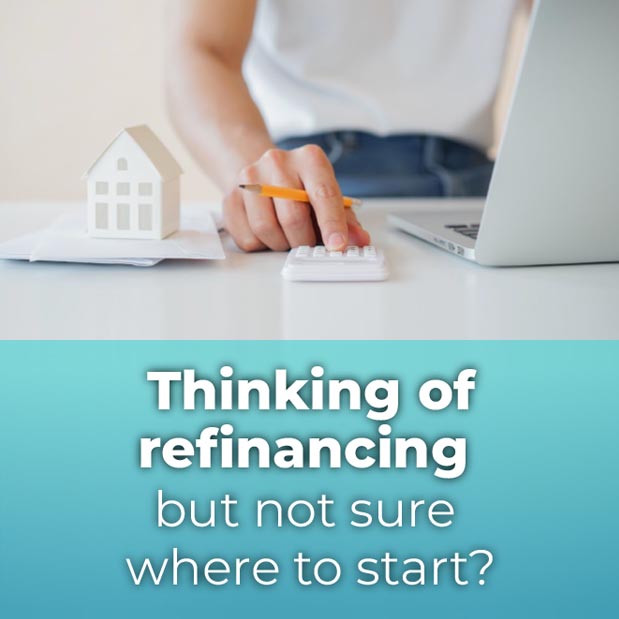A Step-by-Step Guide to Refinancing

With mortgage rates fluctuating, homeowners continue to weigh the costs and benefits of refinancing their properties. If you’re considering a mortgage refinance, but aren’t quite sure how to begin, take a look at the following step-by-step plan and assess each point carefully.
Step 1 – Ask, “Does it make sense to refinance?”
There are always certain costs involved when refinancing a mortgage. The point at which the savings outweigh the initial costs is known as the breakeven point. When that breakeven point occurs, it will give you an idea of whether or not refinancing is worth it. If it’s going to take 5 years for you to break even, and you know that your family will likely outgrow the home before that point, then it probably wouldn’t make sense to refinance. However, if you don’t anticipate having to move any time in the foreseeable future, then a refinance may make a lot of sense.
Step 2 – Check Your Credit Score and Finances
Just like when you applied for your first mortgage, your lender will want to look at your credit score and other financial information when you apply for refinancing. Keeping up with your credit is essential, and you’re entitled to a free credit report once per year from each of the three main credit bureaus:
- Experian – www.experian.com
- TransUnion – www.transunion.com
- Equifax – www.equifax.com
In addition to checking in on your credit, you should make sure you have enough cash in savings to take care of things like closing costs, fees, points, etc. Lenders like to see that you’ve been able to establish adequate savings, just as they would if you were applying for a traditional mortgage. However, there are options for needing very little to no down payment.
Step 3 – Find a Lender
Some homeowners refinance with their current lender, while others shop around for the best deal. The key is working with a lender that has a solid reputation for customer service and competitive rates. The mortgage professionals at eLEND® offer industry expertise and personalized guidance to make the refinancing process smooth and stress-free.
Not all lenders provide every type of loan. For instance, FHA loans are only available through lenders approved by the Federal Housing Administration. eLEND® is proud to be an FHA-approved lender, offering streamlined refinancing options for FHA borrowers. Contact us today to learn more!
Step 4 – Compare Rates and Programs
Once you connect with a trusted lending professional, they will help you review various refinancing programs and interest rates. Your lender will assess your goals and recommend the best refinancing solution for your situation.
- If your goal is to pay off your loan sooner, a shorter-term loan (such as a 15- or 20-year fixed mortgage) may be a good option.
- If lowering your monthly payment is a priority, your lender may suggest keeping a longer loan term while securing a lower interest rate.
Step 5 – Lock in and Finalize
Once you’ve found a refinancing program that fits your needs, discuss rate lock options with your lender. Mortgage rates fluctuate daily, so locking in a favorable rate at the right time is essential.
Refinancing can be a great financial move when done strategically. If you’re ready to explore your refinancing options, contact eLEND® today to speak with a mortgage professional!